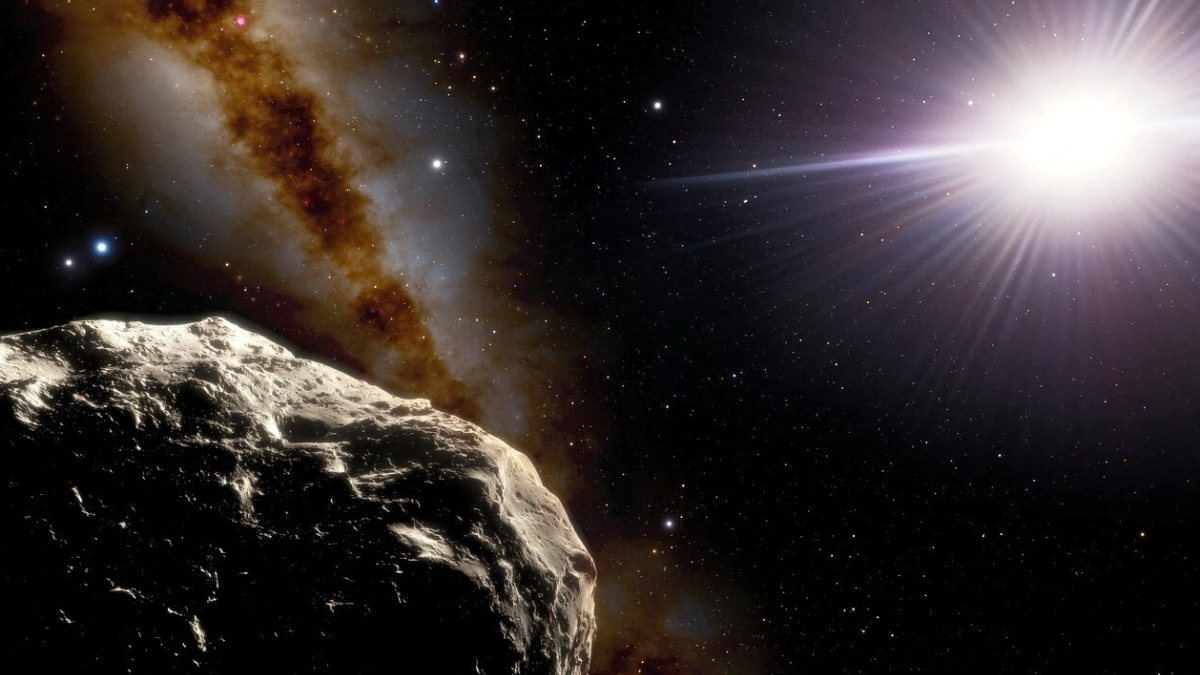A colossal “planet killer” asteroid will pass exceptionally close to Earth today, hurtling by at approximately 58,000 mph (93,000 km/h). This “potentially hazardous” object, comparable in size to a mountain, is among the largest asteroids to come near Earth in over a century.
Known as 2011 UL21, this near-Earth asteroid follows an orbit that occasionally brings it within 1.3 astronomical units (AU) of the sun—about 1.3 times the average distance between Earth and the sun. It completes one orbit around our star every three years. Estimates suggest its diameter ranges from 1.1 to 2.4 miles (1.7 to 3.9 kilometres), making it larger than 99% of known near-Earth asteroids, as reported by the European Space Agency (ESA).
2011 UL21 is estimated to be at least one-tenth the size of the largest asteroid known to have impacted Earth, the Vredefort asteroid, and roughly one-fifth the size of the asteroid that caused the extinction event of the dinosaurs approximately 66 million years ago.
However, while a potential impact from 2011 UL21 would be less catastrophic compared to these historical events, the asteroid still poses a significant threat, capable of causing continental-scale damage and ejecting enough debris into the atmosphere to induce substantial climatic changes. This is why it is labelled a “planet killer.”
Asteroid 2011 UL21 will pass by at a distance of approximately 4.1 million miles (6.6 million km) from Earth, closer than it has been in at least 110 years according to simulations from NASA’s Jet Propulsion Laboratory (JPL). Despite this proximity, it remains classified as a potentially hazardous object by NASA. However, it will still be about 17 times farther away from Earth than the moon during this encounter.
While the asteroid poses no danger to Earth, either presently or in the future, it is noteworthy because it ranks among the ten largest asteroids to come within 4.7 million miles (7.5 million km) of our planet since 1900, according to a recent statement by Gianluca Masi, an astrophysicist and director of the Virtual Telescope Project (VTP).
Where can you watch it live?
You can observe 2011 UL21’s closest approach through a live broadcast by the Virtual Telescope Project, showcasing views from the Bellatrix Astronomical Observatory in Ceccano, Italy. The live stream begins at 4 p.m. ET on June 27 (1:30 am IST), with the asteroid expected to pass closest about 15 minutes later.
Alternatively, with a good telescope, you might catch a glimpse of the asteroid in the night sky. It will reach peak brightness on June 28 and June 29, visible from the Northern Hemisphere for those who know where to look. According to VTP, at its brightest, it will shine similarly to Proxima Centauri, the closest known star to the sun.

Shambhu Kumar is a science communicator, making complex scientific topics accessible to all. His articles explore breakthroughs in various scientific disciplines, from space exploration to cutting-edge research.


